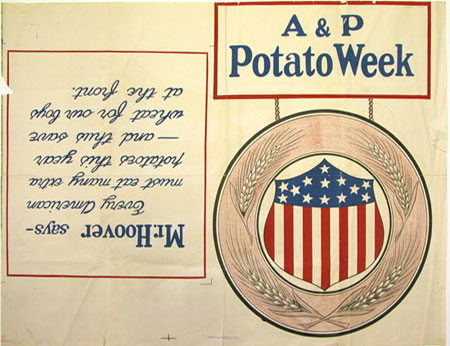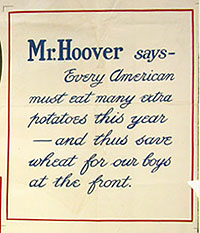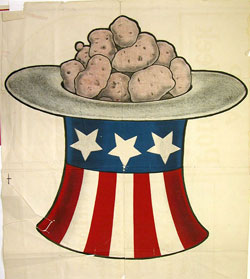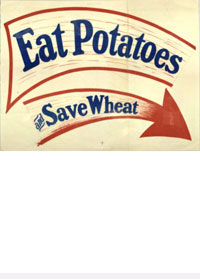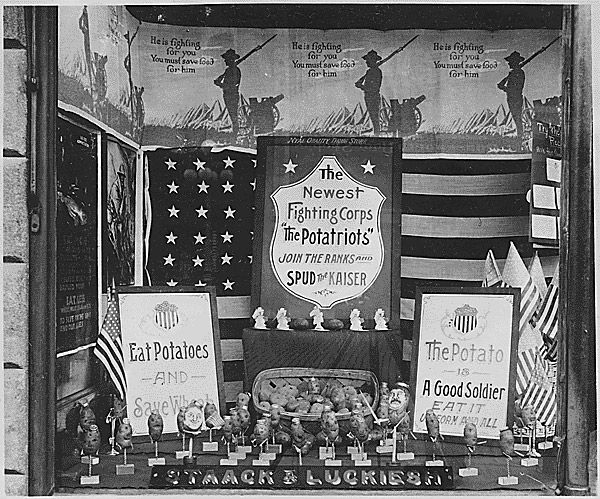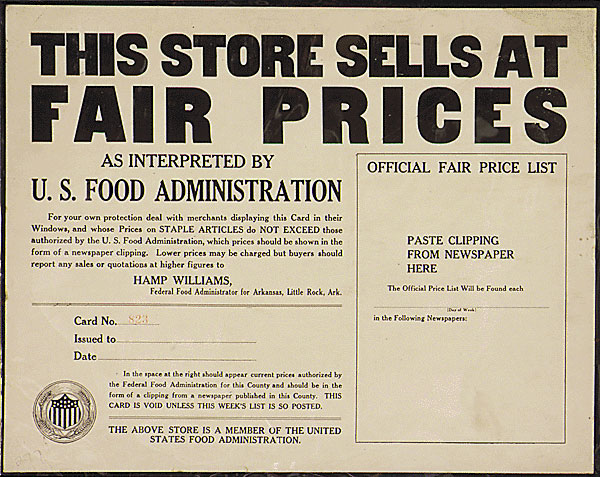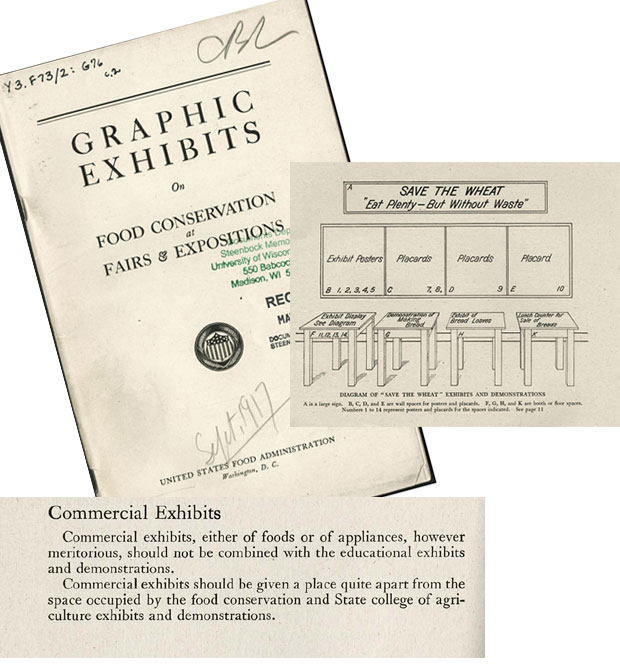Section 1 Image Gallery
Previous image |
Section Page | Next Image
Image 5, 5b, 5c, 5d
In-Store Promotional Materials for A&P Potato Week
and
"Potatriots" Window Display by Staack and Luckiesh grocer (scroll to bottom of page)
A&P's mass-produced grocery store display panels created during WWI foreshadow the increasing interdependence between government messages, commercial interests and cooperation, and influencing food-related consumption behavior on the homefront.
According to A&P's historical timeline, A&P grew from about 350 stores in 1910 to 4,638 in 1920. Posters in A&P stores, therefore, would have reached a large number of shoppers with the US Food Administration (USFA) message. Use of the USFA emblem and reference to Herbert Hoover signified A&P's willingness to cooperate with USFA and their interest in supporting the wheat saving campaign, including selling surplus supplies of potatoes.
Smaller chains might have created unique in-store or window displays using USFA posters, like the "Potatriots" display created by the Staack and Luckiesh grocer in Iowa (see photograph below), or simply displayed the placard stating compliance, like the one from the state of Arkansas (below).
A 50-page exhibit pamphlet (bottom) produced by USFA contained ideas for exhibits and events like "emergency bread" baking contests. Among the practical information about setting up informative displays, the how-to guide also specified a distinction between educational exhibits and commercial exhibits (details from pages 8 and 10).
Posters: A&P with USFA
Placard: Arkansas State Food Administrator with USFA
Photo: Staack and Luckiesh with Iowa State Food Administration, Education Division, c.1917.
Pamhplet: USFA, 1917.
Sources: Special Collections, National Agricultural Library,
Photographs and other Graphic Materials, NARA's Central Plains Region (Kansas City) #NRE-4-IOWA-1
and
The Human Ecology Collection, University of Wisconsin, http://digital.library.wisc.edu/1711.dl/HumanEcol.GraphicExhibits

